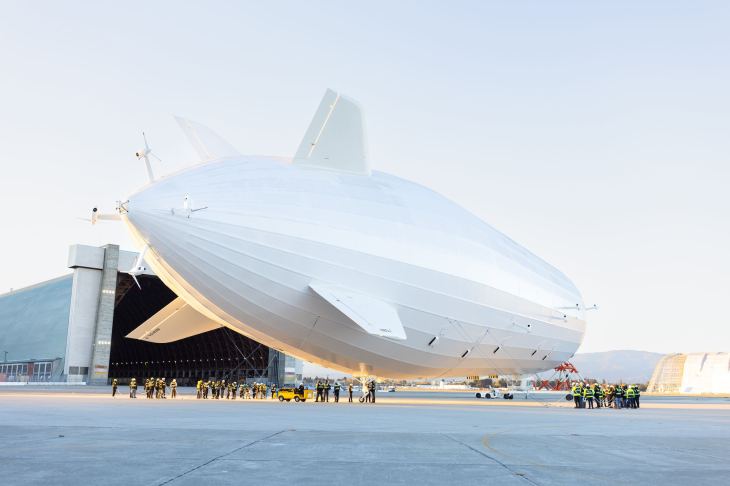The world’s largest aircraft breaks cover in Silicon Valley – Pathfinder 1, a prototype electric airship designed by LTA Research, has been unveiled to the public in Silicon Valley. The project’s backer, Google co-founder Sergey Brin, hopes it will accelerate the airship’s humanitarian efforts and usher in a new era of climate-friendly air travel.
The company’s ultimate goal is to build a family of airships that will offer zero-carbon passenger transportation as well as disaster relief in areas affected by damaged roads and airports.
The airship has taken drone technology, which includes fly-by-wire controls, electric motors, and lidar sensing, and supersized it to something longer than three Boeing 737s, potentially able to carry tons of cargo over many hundreds of miles. Its snow-white steampunk profile is visible from the busy 101 highway.
On the eve of the unveiling, LTA CEO Alan Weston stated that It’s been ten years of blood, sweat, and tears. “Now we must show that this can reliably fly in real-world conditions. And we’re going to do that.”
Before Pathfinder 1 is relocated to Akron, Ohio, where LTA Research is developing an even larger airship, the Pathfinder 3, a series of ever-more-ambitious flight tests are scheduled.
Over the course of the next year, however, the enormous airship appears destined to become a Silicon Valley icon as its innovative materials and systems are methodically tested in close proximity to businesses such as Google, Meta, and Amazon.
Also see: Rocket Lab Will launch a pair of climate satellites for
Weston expressed his excitement at the prospect of creating the framework for multiple airships rather than just one “The innovations and the technologies that we’re about to demonstrate have the potential to lay the foundation for a new industry.”
The largest aircraft in nearly a century

With a length of 124.5 meters, Pathfinder 1 is significantly larger than both the existing Goodyear airships and the enormous Stratolaunch aircraft used to launch orbital rockets. Since the enormous Hindenburg airship of the 1930s, this is the largest aircraft to fly. Despite having an identical appearance to the tragic airship and utilizing a Zeppelin passenger gondola, the Pathfinder 1 was primarily constructed from the ground up utilizing novel materials and technological advancements.
Also see: Samsung Galaxy S24 Series Launch Date Tipped, Might Debut Earlier Than Expected
Instead of using flammable hydrogen as a lifting gas, LTA’s airship uses stable helium, which is stored in thirteen enormous rip-stop nylon cells and is tracked by lidar laser systems. Lightweight synthetic Tedlar skin encircles the gas cells, creating a protective skeleton made of 10,000 carbon-fiber reinforced tubes and 3,000 titanium hubs.
Vertical takeoff and landing are made possible by twelve electric motors that are run on diesel generators and batteries. Although the Pathfinder 1’s initial flights will be at much slower speeds, they can propel it at up to 65 knots (75 mph).
At NASA’s Moffett Field, the silent airship made its way out of its hangar from World War II at a walking pace this morning, guided by ropes held by numerous engineers, technicians, and ground crew members of the company.
The reason the entire operation took place in the dark was not that LTA has anything to conceal, but rather because the airship’s flight test program started as soon as the sun rose. The first thing that Pathfinder 1’s engineers are hoping to learn is how the weather-resistant polymer skin and roughly one million cubic feet of helium within it will react to California’s sun.
“We have sophisticated methodology that allows us to replicate real-world conditions using static test stands,” said Jillian Hilenski, senior mechanical engineer at LTA. “However, dynamic on-ship flight tests provide the best data on the health and efficiency of the airship.”













